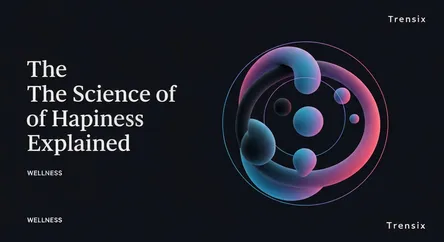Wellness
The Science of Happiness Explained

Discover the science of happiness, a field exploring what makes us thrive and how to cultivate a more joyful and meaningful life.
What is it?
The science of happiness is an area of social science, particularly positive psychology, that empirically studies what makes life most worth living. Instead of focusing on mental illness, it investigates the factors that allow individuals and communities to flourish. This includes examining components like positive emotions, engagement in activities, strong social relationships, and a sense of meaning or purpose. Research suggests that while genetics and life circumstances play a role, around 40% of our happiness is influenced by our intentional choices and daily habits, making it a skill that can be cultivated.
Why is it trending?
This field is growing as people seek proactive, evidence-based strategies to improve their mental well-being, rather than just treating disorders. There is a greater societal emphasis on wellness and self-care, and the science of happiness offers accessible tools that resonate with this trend. Popular books and studies have shown that happiness isn't just a fleeting emotion but a trainable skill. This empowering message has gained traction, encouraging people to actively engage in practices like mindfulness, optimism, and fostering social connections to lead more satisfying lives.
How does it affect people?
It provides individuals with practical, proven methods to enhance their overall quality of life. By applying findings from this field, people can improve their mental health, build resilience against stress, and strengthen their relationships. Practices such as keeping a gratitude journal, performing acts of kindness, and focusing on personal strengths have been shown to increase life satisfaction. This science empowers people by shifting their focus from unchangeable external factors to internal mindsets and behaviors they can control, ultimately fostering a more durable sense of well-being and fulfillment.